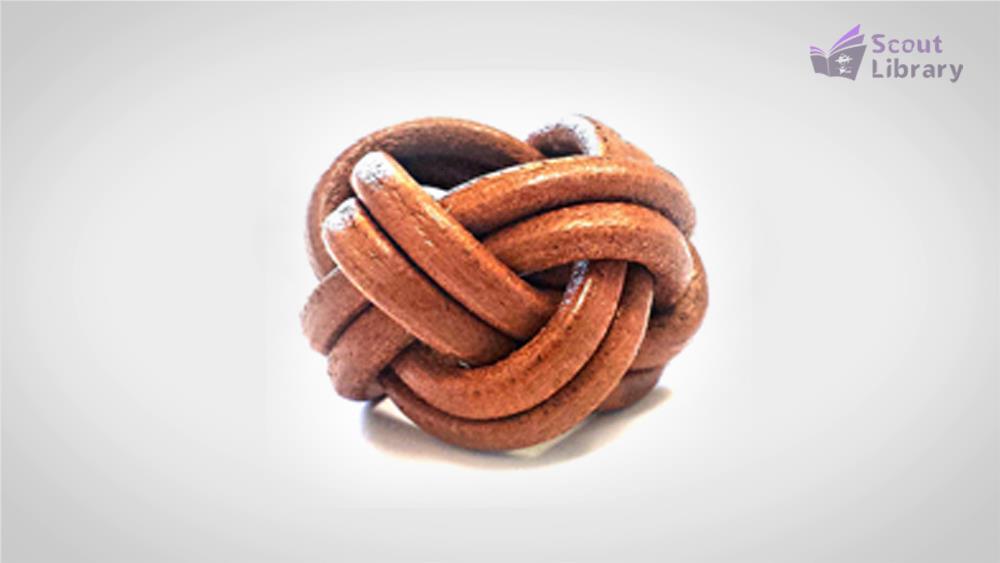WOGGLE
A woggle is a device to fasten the neckerchief, or scarf, worn as part of the Scout or Girl Guides uniform, originated by a Tasmanian Scout in the 1920s.
Origins of the woggle
Early Scouts tied a knot in their neckerchief (scarf) to fasten it around the neck. In the United States, experiments were made with rings made from bone, rope or wood.
A young Australian Scout, Bill Shankley, who was responsible for running a workshop and developing ideas for camping equipment at Gilwell Park, became aware of the American rings, and set out to create something similar. The result was the Gilwell Woggle.
On the origin of the Woggle, Shankley said:
They used to knot their scarves, which used to get creased and stick out at the ends. But in America the early scouts used to plait up various stuffs to make a ring for theirs — they called it a boon-doggle. I got some thin sewing machine leather belting, plaited it into a neat ring, submitted it, and had it accepted. I called it a Woggle and that’s the name it’s known by throughout the world
The earliest known reference to a Woggle is the June 1923 edition of The Scout. The term was quickly applied to other designs of fastener, of many shapes and sizes, and is today used around the world.
The word ring was used in editions of the Scouting handbook Scouting for Boys until 1929 when Baden-Powell changed it in the 14th edition:
It [the scarf] may be fastened at the throat by a knot or woggle, which is some form of ring made of cord, metal or bone, or anything you like
One story relating to the origin of the word woggle is that it was named to rhyme with the word boon doggle used in America. However the term woggle pre-dates the first known reference to this in 1925. There are a few other references to the word woggle before its adoption by the Scout movement. It is thought that woggle was a verb, with similar meanings to waggle and wobble, in the 16th century. It was in limited use as a noun around 1900.
Although the name woggle is used in many English-speaking countries, in the United States, the term woggle is reserved for the turk’s head knot used to secure the neckerchief of Wood Badge participants. In the US, the object used to secure the neckerchief is called a neckerchief slide.
An early photographic reference to a SLIDE is in the BSA magazine Scouting of April 1, 1917. The cover for November 1917 issue prominently shows a scout wearing a slide to hold the neckerchief in place.
In the BSA magazine Scouting from August 1923 Page 7, the term “slip-on” and “slide” are both referenced. There is an example of a rams head made of bone and an illustration on how to make your own Turk’s head slip-on. The article also comments that the neckerchief should be tied using the “four in hand” knot (often used to tie a necktie) when not using a slide.
Two months later, Boy’s Life magazine repeated many of the article key points. The name Slide or Neckerchief Slide appears as early as October 1923 Page 62 with a discussion of the slide being a smart addition to the neckerchief and having some benefits over a knot to tie the neckerchief on. The article makes reference to making your own troop or patrol slide. Also in this same article, on page 63, the Slide is referred to as a “Slip-On”
The first appearance of the term “Woggle” in Boys Life was in Feb. 1966 (Page 71) with reference to a question in a quiz, asking what woggle is to a British Scout?
GILWELL WOGGLE
The Woggle designed by Bill Shankley became known as the Gillwell Woggle, as it has been traditionally presented to leaders who have completed their Wood Badge training. Trained leaders are admitted into 1st Gillwell Park Scout Troop, with the Gilwell Woggle as one of its symbols. Because of its association it is not worn by other scouts.
At the 1989 US National Scout Jamboree, William “Green Bar Bill” said to Jim Newell, “Francis Gidney was the Camp Chief for the first two courses at Gilwell Park. Francis Gidney knew that most folks were not good wood carvers and asked them to make their own neckerchief slides by tying the Turk’s-head knot.” This in no way is intended to contradict the contribution made by Bill Shankley.




